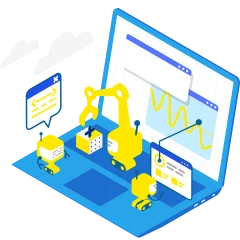Imagine you are planning to build a detached house. You have agreed detailed plans with the architect, know the costs and the completion date. But during construction, you keep coming up with new ideas: “Oh, and couldn’t we quickly add a balcony?” Such subsequent changes quickly lead to delays, budget overruns and frustration for everyone involved. In software development, this phenomenon is known as “scope creep”.
What is scope creep and why is it a problem?
Scope creep refers to the gradual expansion of the project scope during software development. Originally agreed functions and features are expanded or completely new requirements are added. This may not sound dramatic at first glance, but it can have serious consequences:
- Delayed delivery: the planned completion date is postponed due to the additional tasks.
- Higher costs: New features require additional working time, which leads to higher development costs.
These two points are problematic if new features are simply “built into” the project. However, this is completely normal in the course of orderly change management (more on this later). Other consequences are
- Inferior quality: In order to keep to the original schedule, it is not uncommon for the pressure on the project team to be increased, which means that the quality of already planned and new features suffers.
- Dissatisfied stakeholders: Delays, budget overruns and bugs/errors lead to frustration among customers and project stakeholders.
If you’re now thinking, “oh, I know these issues all too well from past software projects”: let me tell you, you’re not alone.
But don’t worry, with the right measures, scope creep can be effectively avoided.
How can scope creep be avoided?
Fortunately, there are strategies to effectively contain scope creep. Both the client and the contractor are equally responsible. It also doesn’t matter whether the project is in-house or outsourced. We therefore look at some important measures below:
Clear and detailed project definition
The cornerstone of a successful project is a clearly defined scope. At the beginning, all those involved should work together to precisely define the project goals, features, functions and limitations. This specification serves as a basis and orientation aid and prevents misunderstandings as the project progresses.
A work breakdown structure is therefore also essential in agile software development. It represents the basic framework of every project and is indispensable for good project managers. It allows project participants to see all work packages at all times. But a project structure alone does not prevent scope creep – together with effective project management, however, it does.
Effective project management
An experienced project manager is the captain of the project. They ensure that the agreed project scope is adhered to: He pays regular attention to the prioritization of tasks, monitors the schedule and budget and communicates transparently with all stakeholders.
If change requests do arise, they must be evaluated and approved transparently. Change management should therefore not be underestimated by anyone involved in the project planning and should be properly implemented at the start of the project.
Prioritization and change management process
Not all change requests can be taken into account. It is therefore important that new requirements are evaluated and prioritized transparently. Both the client and the contractor must ask themselves: Is the new function really necessary to achieve the project goals? How much effort will it take to implement it? A structured change management process ensures that changes are documented, approved and integrated into the project plan.
Often customers or clients do not even know that there is such a thing as change requests (the same applies to the other side). This can often lead to resentment, especially if the project is already at a stage where changes cannot be implemented as desired or only with great effort. Implementing a change request procedure in advance prevents misunderstandings.
Regular communication and transparent reporting
Open communication between all those involved is essential. Regular meetings should be held to discuss the project status and any questions or change requests that arise. Transparent reporting, for example in the form of project status reports and weekly status meetings (weekly check-ins), ensures that all stakeholders are informed and can react to potential deviations at an early stage.
Who has to discuss which topics with whom should also be clarified in advance. This also includes who is allowed to initiate a change request procedure in the first place. A communication plan and a RACI matrix, in which responsibilities and authorities are defined, are therefore often used to define communication channels.
Involving the customer in the development process
Common practice in an agile environment: the constant involvement of the customer in the development process. Through regular demos and feedback rounds, wishes and requirements can be identified and taken into account at an early stage. This avoids subsequent change loops.
In software development, staging systems and test systems should therefore be made available at an early stage. This also facilitates later acceptance immensely, as features have already been made available bit by bit.
Conclusion: Scope creep can be controlled with awareness and the right measures
Scope creep is a common problem in software development, but it can be minimized through forward planning and effective project management. And no, changing or adding features during the project is not automatically lava – with the right approach, it can be done to the satisfaction of all stakeholders.
A clear project definition, transparent communication and the involvement of the customer in the development process are therefore the key to success. Avoiding scope creep ensures that your software project is completed on time, on budget and with the desired quality.
Don’t let unforeseen changes throw you off track and steer your project safely to the finish line. As an experienced web development agency, we are happy to provide you with tailor-made support!






